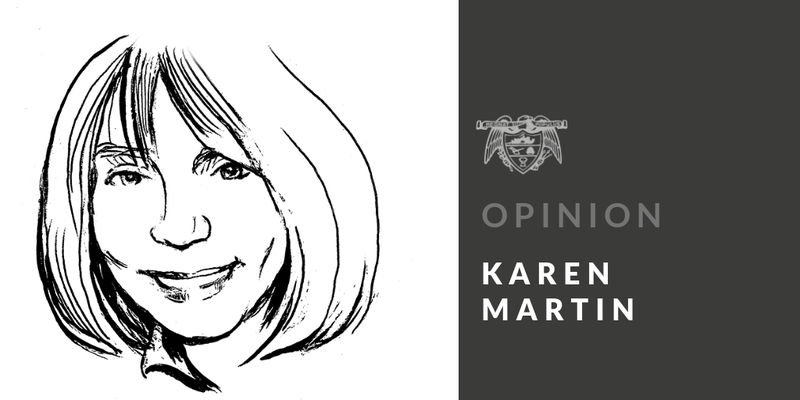"Stick Figures are People Too" is the title of a free two-hour workshop conducted via Zoom on March 6 by Robert Bean, chair of the Painting and Drawing departments of the Windgate Art School of the Arkansas Museum of Fine Arts. A graduate of the University of Arkansas-Little Rock, he's been an exhibiting artist since the late 1990s and a teacher at the museum since 2015.
In an attempt to stave off pandemic sameness, I signed up. But really? Two hours? What if I get bored? What if the instructor is condescending? Or incomprehensible? What if the Zoom format doesn't work in teaching a bunch of faceless (except for those awful little boxes on the Zoom screen) amusement-seekers how to revive whatever interest in drawing they recall from their varied pasts?
Will I ever get over my eighth-grade art teacher ordering me to stop drawing long eyelashes on my penciled portraits because they detracted from the final product? Shouldn't I be outside, washing my car?
"My degree is in drawing, and it's my favorite of all the visual arts mediums, which is one of the reasons why I find it to be so wonderful to work at an museum that has a world-class collection of drawings in its catalog," Bean says by way of introduction.
His enthusiasm is contagious; he presents an appealing mix of competence, friendliness and practical good humor, which was apparent from the opening moments of his presentation.
I never expected him to share a new way of seeing as a component of learning to draw. That didn't happen in my eighth-grade class. What a game-changer!
We tend to look at objects as a whole, he explains--a child, a horse, a house, a flower--and think we know what's in front of us. Instead, when drawing, forget what you think is there. Look for shapes, angles, lines, contours, and light.
"There's a difference between drawing what you know and what you see," he says. "Get your brain to be quiet. Build a scaffold and put a realistic drawing on top of it."
It's observational drawing; "see it the way it is, and draw what you really see."
Start with shapes: square, triangle, circle, rectangle. That comes quickly. Then move on to forms--cubes, pyramids, spheres, cylinders--which can flesh out two dimensions into a three-dimensional illusion and provide volume and mass. That comes slowly and more accurately.
"You must see the real to make the illusion," Bean says. "Basic shapes are used to describe a complete, complex form. Go from simple shapes to simple forms, from a square to a cube," then use light and shadow to refine.
This is where the stick figures come into play by creating gesture drawings that capture movement, angles, action, weight balance, and counter-balance, to bring life to rapidly sketched simple forms.
Create more advanced stick figures by adding contours: edges, surfaces, clothes, muscle and values. "Breaking a stick-figure line adds motion--sitting, running, driving, touching toes, yelling; capture the angle first," he says.
From there, advance to a stereometric figure: a form/shape based on that advanced stick figure, by considering volume, mass, angles and planes.
An example is a face, Bean explains. It's a cube with three sides: a front plane, side plane, and top plane. Then build the rest of the body out of cubes to capture the form of a person. Use a cube for the rib cage, a cylinder for the pelvis, legs, and upper and lower arms, triangles for hands. "This helps with setting up foreshortening," he says.
If your results are less than thrilling, don't despair. Drawing is a skill, he points out. "It takes practice."
Confused? I guess you had to be there. For that, you can sign up for "Give Drawing a Try!" It's Bean's next free virtual workshop, planned from 1- 3 p.m. Saturday, April 17.
The workshop will focus on demonstrating some simple concepts in drawing "to show you that it's easier than you might think, and that it's a skill that can be learned by almost anyone. All you need is a pencil or pen and a few sheets of paper."
I'll be there, and plan to attend three other free workshops in April. Maybe I'll discover my long-hidden inner artist. Maybe you will too. For more information visit arkmfa.org/learn/classes-workshops/
Karen Martin is senior editor of Perspective.
kmartin@arkansasonline.com
